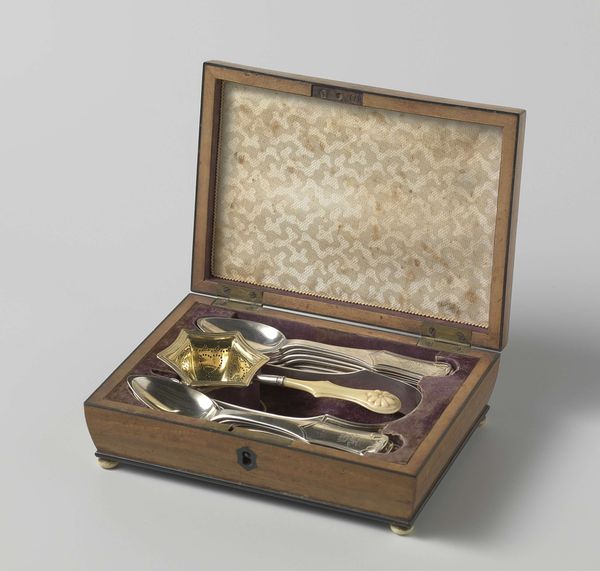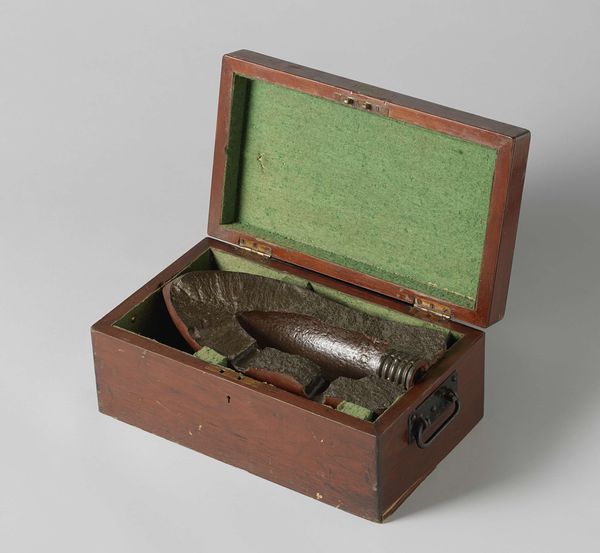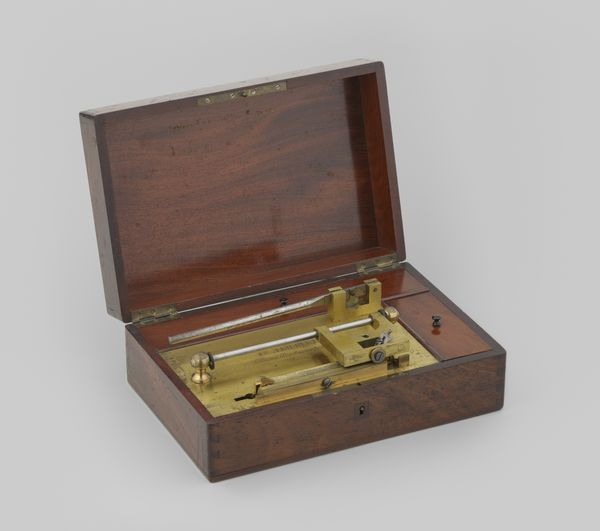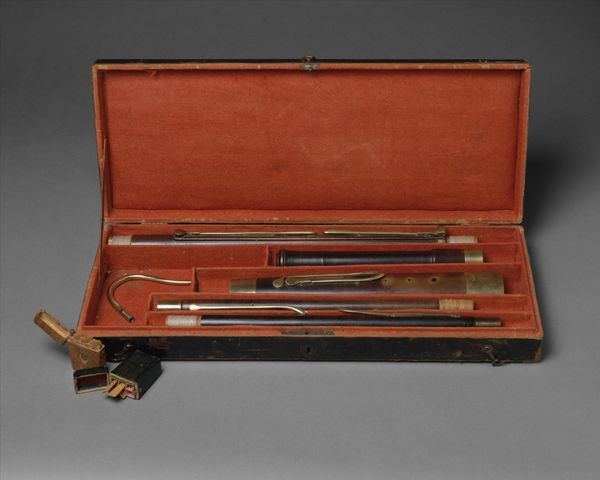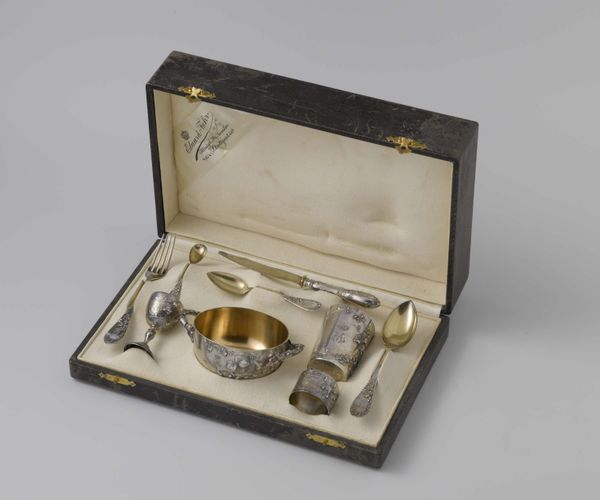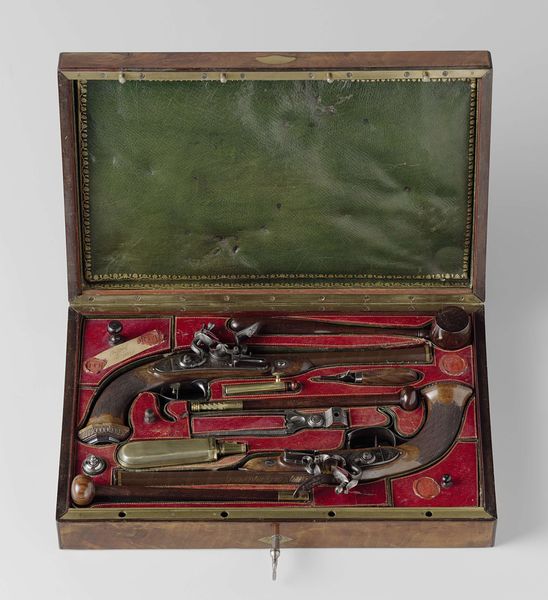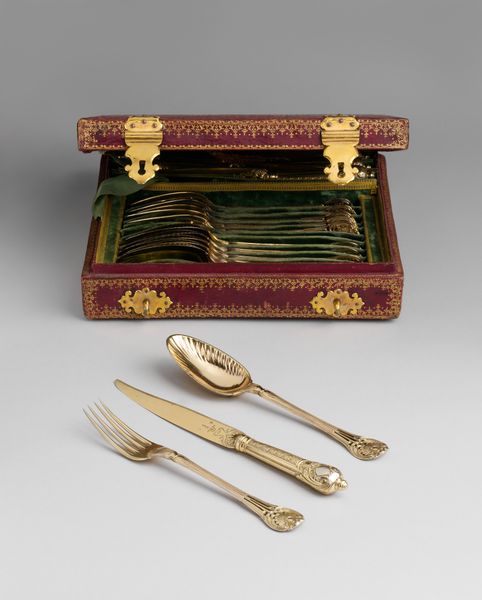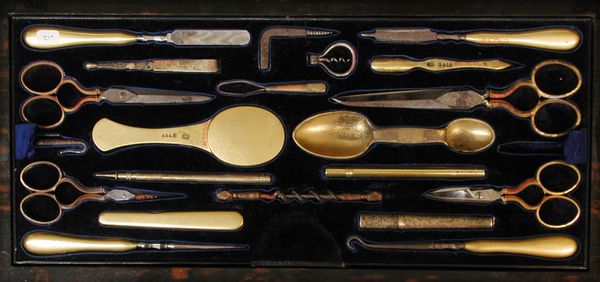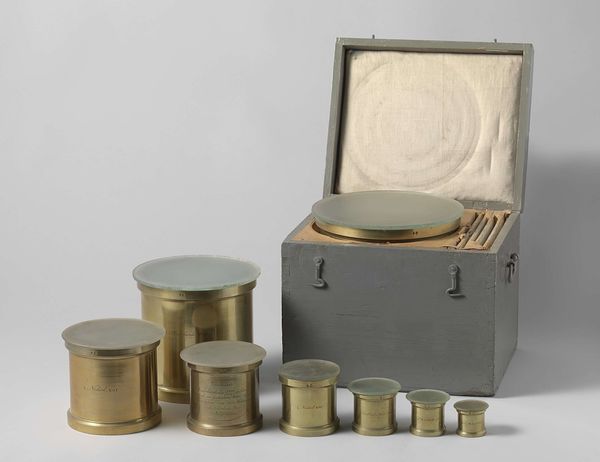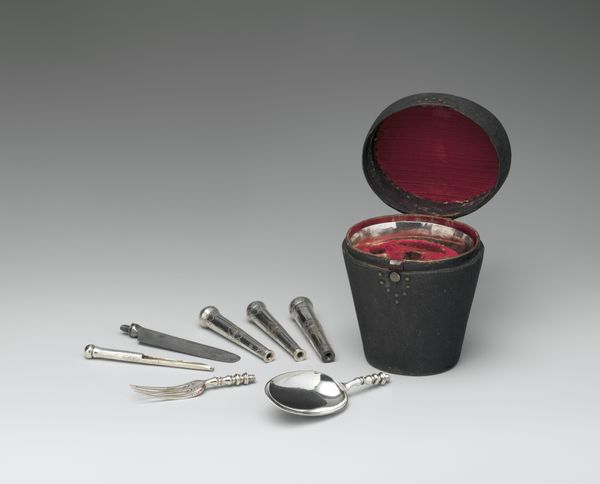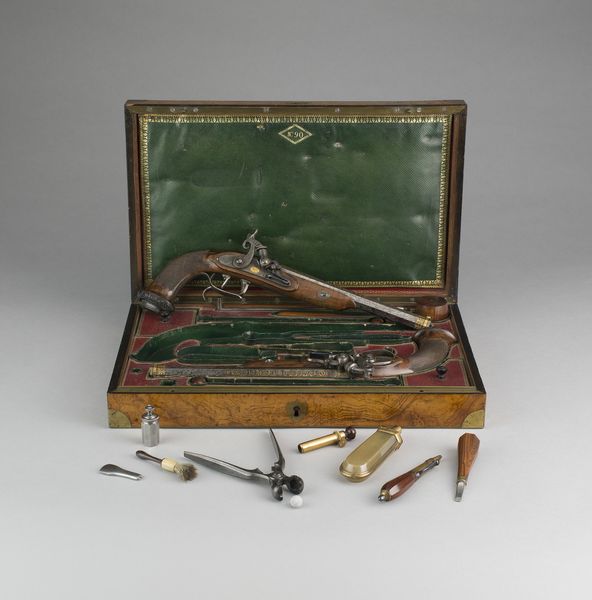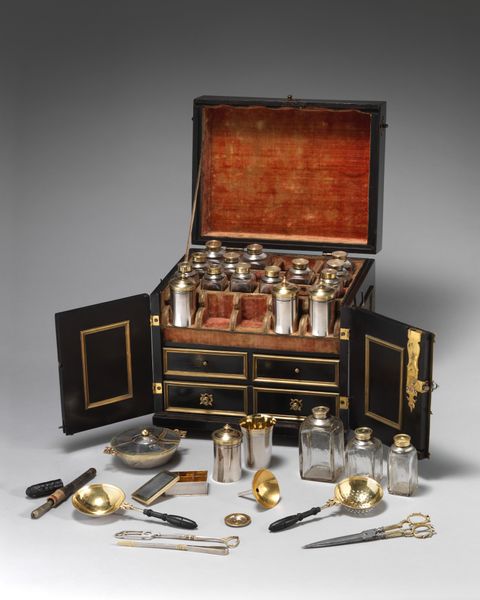
brass, metal, gold, metalwork-silver, sculpture
#
brass
#
metal
#
gold
#
metalwork-silver
#
sculpture
#
decorative-art
Dimensions: Length (Fork [a]): 7 7/8 in. (20 cm); Length (Knife [b]): 9 9/16 in. (24.3 cm); Length (Spoon [c]): 8 1/4 in. (21 cm); Length (Marrow spoon [d]): 6 3/16 in. (15.7 cm); Length (Two-prong fork [e]): 9 1/8 in. (23.2 cm); Overall (Spice box [f]): 1 1/4 × 2 15/16 × 2 3/16 in. (3.2 × 7.5 × 5.6 cm); Overall (Egg cup [g]): 1 1/2 × 2 3/8 × 1 3/8 in. (3.8 × 6 × 3.5 cm); Height (Beaker with lid [h, i]): 4 1/2 in. (11.4 cm); Overall (Box [j]): 2 3/4 × 10 1/8 × 7 7/8 in. (7 × 25.7 × 20 cm)
Copyright: Public Domain
Crafted by Samuel Bardet around the 18th century, this traveling set with a glass beaker, now held at the Metropolitan Museum, speaks volumes about personal ritual and social identity. The inclusion of a personal set of cutlery represents more than mere utility; it signifies a self-contained world, a portable extension of one’s identity amidst travel. Consider the beaker, a vessel for drink. Across epochs, the act of sharing a drink carries potent symbolism, from religious communion to the simple bond forged in hospitality. Notice how the modern cocktail set echoes the same sentiment. These are tools not just for sustenance, but for creating and controlling the rituals of consumption. The traveling set whispers of control and the human desire to carry comfort and civility across borders, reflecting a collective, perhaps subconscious, need to assert order in a transient world. This set is not merely about dining; it’s about preserving oneself, a subtle yet profound assertion of identity through symbolic objects.
Comments
No comments
Be the first to comment and join the conversation on the ultimate creative platform.


